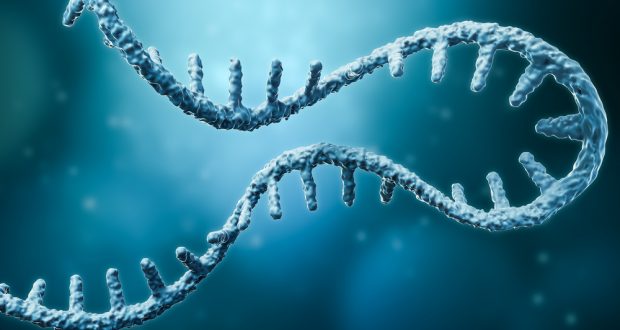RNA-seq and ChIP-seq data were used together to investigate the role and expression of ERVs
Endogenous retroviruses (ERVs) compose 8-10% of the human and mouse genomes[1]. Approximately 20% of TEs in the mouse and human genome are ERVs [1, 2]. During preimplantation development, ERVs are actively expressed across different stages. A minority of mouse embryonic stem cells (ESCs), such as 2-cell cleavage embryos, express ERV MERVL significantly [3].
In Weiyu’s study, ChIP-seq and RNA-seq data were used together with several sets of published data, such as WGBS, ATAC-seq, and histone modifications data, to investigate the role and expression of ERVs. The findings suggest that the expression of ERV transcripts is stage-specific in the early embryos of mice and that Zscan4c activates enhancer activity of MT2/MERVL to promote the expression of nearby genes in 2-cell/4-cell embryos. This activation was mediated by the deposition of H3K27ac, H3K4me1, and H3K14ac on MT2 loci and the recruitment of the GBAF complex [3].

To gain insight into the role of Zscan4c in activating MT2/MERVL and 2-cell and 4-cell gene expression, Zscan4c ChIP-seq was performed after Zscan4c overexpression. Most of the Zscan4c binding sites were on intergenic (46%) and intronic (36.8%) regions. In regard to the MT2/MERVL, the ChIP-seq result demonstrated the enrichment of Zscan4c binding on MT2 and MERVL-int. Also, Zscan4c peaks presented on 5 MT2 of the MERVL consensus. Furthermore, the Zscan4c binding profile on the MT2/MERVL consensus and the upregulated expression of the whole MT2/MERVL consensus implied that the Zscan4c may activate MERVL-int through binding to MT2 alone. The ChIP-seq of H3K27ac, H3K4me1 and H3K14ac revealed the increments of these enhancer region marks on MT2.
ERVs were usually silenced by various histone modifications on histone H3 variants and respective histone chaperones in ESCs. NGS technologies ChIP-seq and RNA-seq assisted Fuquan’s study, and it was found that H2A/H2B histone chaperone FACT (facilitates chromatin transcription) plays a critical role in silencing ERVs and ERV-derived cryptic promoters in ESCs [4].
ChIP-seq of Ssrp1, a component of FACT, was performed to inspect how Ssrp1 regulates the expression of genes and TEs. It was found that Ssrp1 binding sites were accommodated in promoter regions and the gene body and were well enriched on MERVL, which is highly expressed in 2-cell (2C) embryos and activated after the Ssrp1 knockout. Ssrp1 strongly interacted with Usp7, which is known as an H2B deubiquitinase. The ChIP-seq of Usp7 showed enrichment of Usp7 binding on Ssrp1 peaks, and this enrichment decreased after the Ssrp1 loss. Fewer Usp7 became associated with MERVL after the Ssrp1 loss. These results support the mechanism that FACT represses MERVL by recruiting Usp7.
Chromatin Immunoprecipitation Sequencing (ChIP-Seq)
Empowered by NGS, ChIP-Seq combines the selectivity of chromatin immuno-precipitation (ChIP) and provides genome-wide profiling of DNA targets for histone modification, transcription factors, and other DNA-associated proteins. At Novogene, we offer high-quality ChIP-Seq service with comprehensive bioinformatics solutions, including peak calling, motif analysis, peak annotation, differential analysis, and related functional analysis.
https://www.novogene.com/us-en/services/research-services/epigenomics/chip-seq/
RNA Sequencing (RNA-seq)
Eukaryotic mRNA sequencing (mRNA-Seq), utilizing the technology of NGS, reveals the expression profiles of mRNA in a biological sample and illustrates continuous variations in the cellular transcriptome. Novogene’s mRNA-Seq, based on state-of-the-art Illumina NovaSeq platforms with the paired-end 150 bp sequencing strategy, offers comprehensive solutions for the analysis of gene expression quantification and differential gene expressions among sample groups, as well as for identification of novel transcripts, alternative splicing, gene fusion events, etc.
https://www.novogene.com/us-en/services/research-services/transcriptome-sequencing/eukaryote-mrna-sequencing/
Novogene Advantages
Novogene is highly experienced with NGS services and well-equipped to support researchers interested in the study of epigenetic regulation and provide comprehensive solutions from library construction to data analysis. Until December 2020, Novogene has published over 600 SCI articles in cooperation with project partners, with a cumulative impact factor of over 4,270. With advanced experimental techniques, diverse sequencing platforms, strict quality control management, professional bioinformatic expertise and rich project experience, Novogene assists your scientific research with high-quality data and services, delivering you publication ready data.
Reference:
[1] Stocking,C. and Kozak,C.A. (2008) Murine endogenous retroviruses. Cell Mol. Life Sci., 65, 3383-3398.
[2] Cordaux, R., & Batzer, M. A. (2009). The impact of retrotransposons on human genome evolution. Nature Reviews Genetics, 10(10), 691-703.
[3] Zhang, W., Chen, F., Chen, R., Xie, D., Yang, J., Zhao, X., … & Lu, X. (2019). Zscan4c activates endogenous retrovirus MERVL and cleavage embryo genes. Nucleic acids research, 47(16), 8485-8501.
[4] Chen, F., Zhang, W., Xie, D., Gao, T., Dong, Z., & Lu, X. (2020). Histone chaperone FACT represses retrotransposon MERVL and MERVL-derived cryptic promoters. Nucleic acids research, 48(18), 10211-10225.
